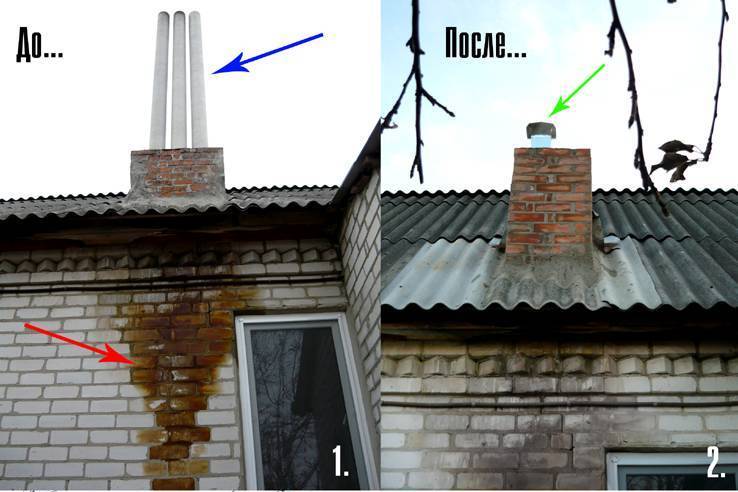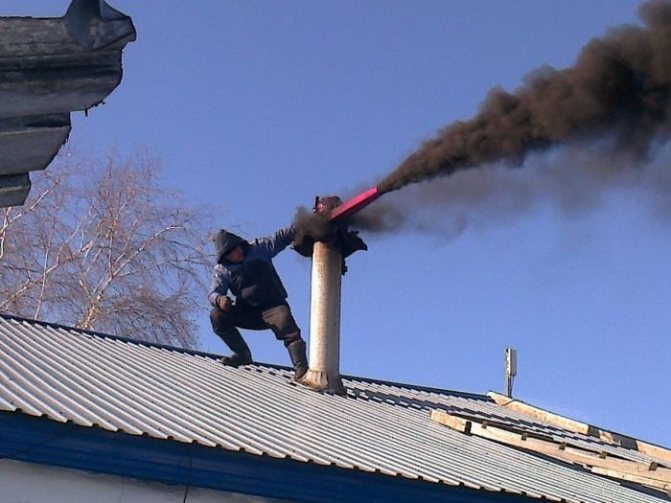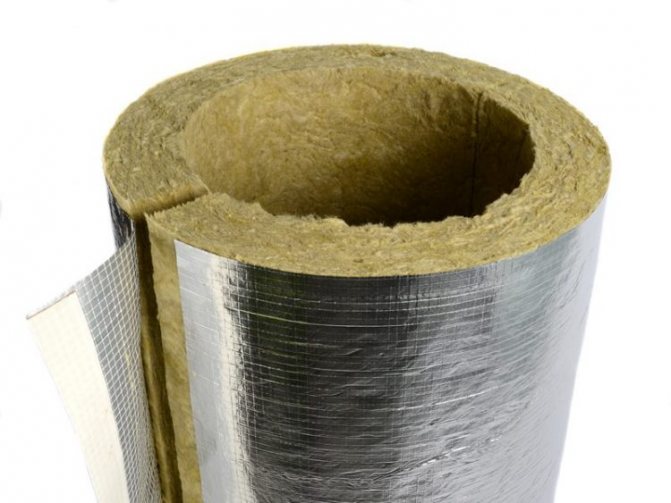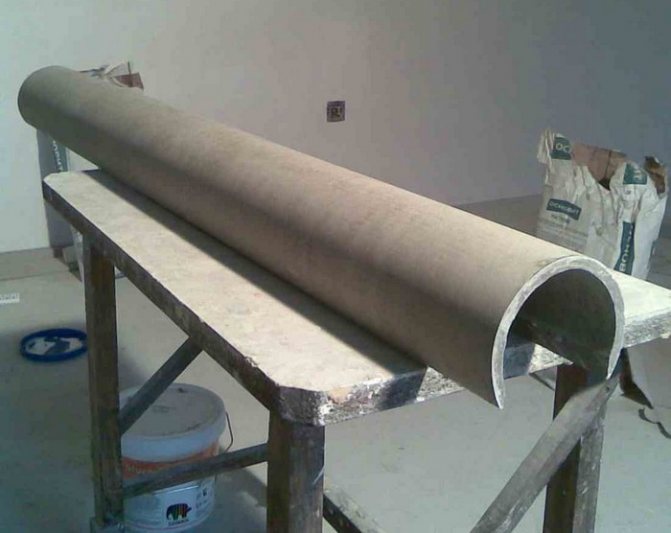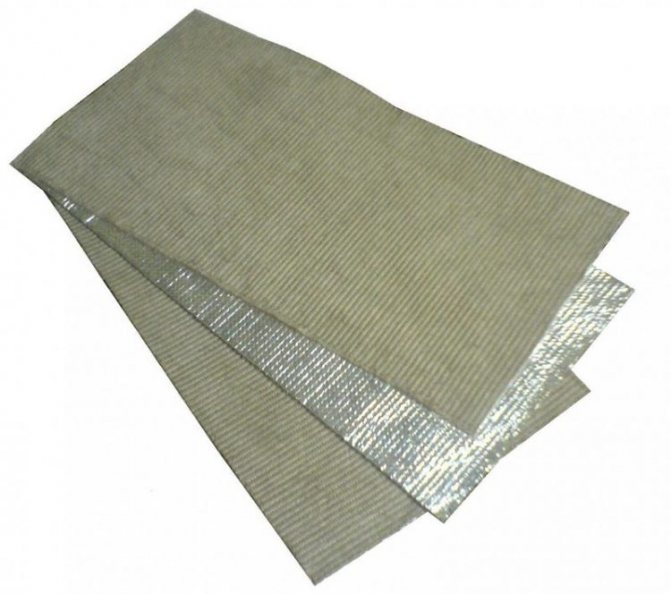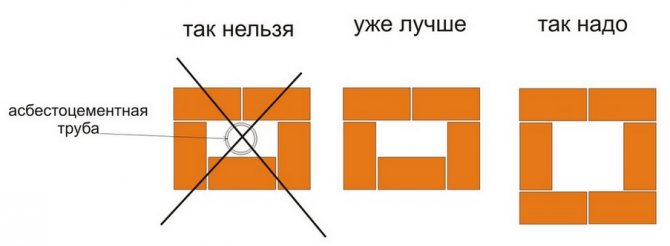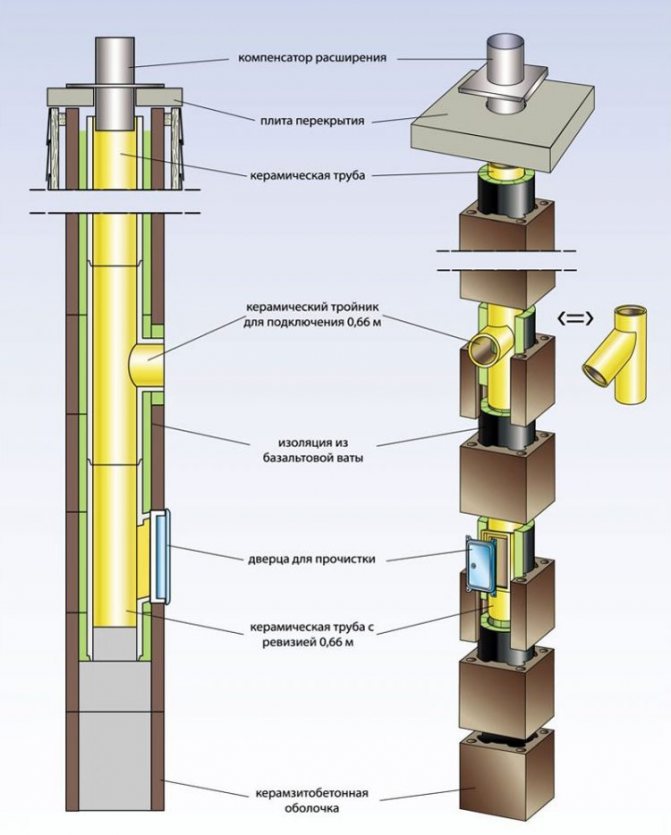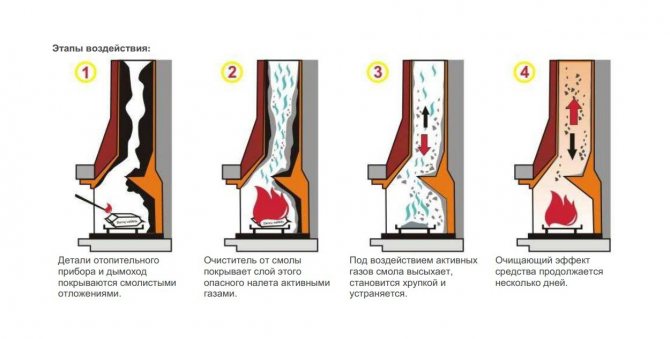Until recently, an asbestos chimney was considered the best option for arranging heating boilers in a house, a bathhouse and other buildings that need heating. The main argument in favor of this decision was that the material is non-combustible, moisture resistant, and most importantly - inexpensive. These factors contributed to the fact that an asbestos chimney was installed in almost every private household. The heads of small utility companies and agricultural organizations did not bypass such a simple solution to current problems.
Is a chimney from an asbestos-cement pipe really such a versatile means of removing combustion products? To deal with this, it is necessary to dwell on the technology of manufacturing asbestos cement, its advantages and disadvantages, the possibility of assembling chimneys from an asbestos pipe with your own hands.
Can an asbestos chimney be used?
This question is increasingly and rightly prevails over private developers. Initially, we will consider the manufacturing technology of these products.
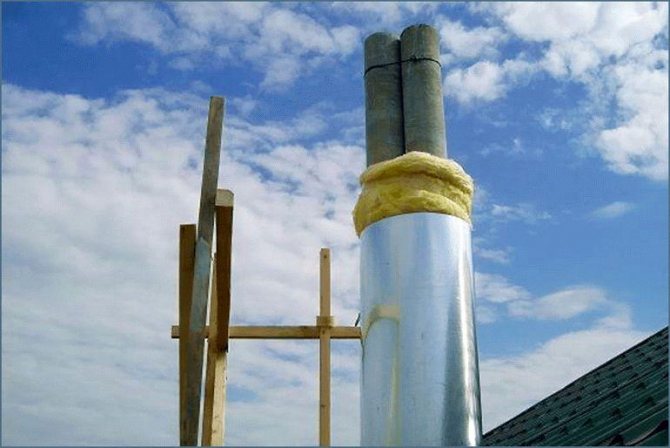
They are made from cement, sand, water and asbestos fibers. Plasticizers and colorants are added to the mixture. The ingredients are thoroughly mixed, the resulting suspension is filtered and given the desired shape. Curing takes place over several days in warm rooms. The finished product is medium strength, waterproof and lightweight. The low price is determined by the availability of the components of the mixture.
Disadvantages of asbestos pipes
Despite the popularity in private construction, the chimney from this material has a lot of disadvantages.
Defects appear almost immediately or after a while, depending on factors such as the fuel used, climatic conditions and the frequency of use of the boiler.
The quality of the pipeline installation is also important. Consider the typical disadvantages of asbestos-cement chimneys and the reasons for their occurrence.
Burnout and burst
Initially, the products were designed for mass production for use in land reclamation, sewer construction and low pressure gas pipelines. The designers did not provide for their operation at high temperatures. The emphasis was placed on tightness and ease of installation of the lines.
The basis of the material is cement, which is a porous material. It absorbs creosote, which is a combustible material. With strong heating, the process of its combustion begins, as a result of which the structure of the walls changes, they become thinner and burn out.
What temperature the pipes made of asbestos cement can withstand: their limit is + 300 ºС.
With further heating, the pressure of the air trapped in the walls of the purlins increases. Products crack, burst and even explode.
Service difficulties
The high strength of asbestos cement is a myth that many people want to believe. Working with links requires extra care and accuracy. The absence of steel reinforcement makes them extremely fragile and brittle, regardless of diameter and type. And that's not all ...


Chimney maintenance is associated with the following difficulties:
- the need for regular cleaning, since the pipes literally attract soot;
- the inability to make inspection windows to get to hard-to-reach areas;
- sensitivity of products to shocks and loads;
- frequent replacement of insulation that collapses from chemically aggressive condensate.
Humidification of the pipeline is fraught with unpleasant consequences, both for communications and for the building as a whole.
Condensate
The main purpose of the products was the laying of open and underground water pipelines of various lengths. Asbestos-cement pipes are resistant to water, but quickly deteriorate when in contact with reactive liquids. It is they that are formed on the surface of the chimney during the interaction of soot and condensate that has come out.
Aggressive mortar flows onto the roof and is absorbed into its surface. The result is the appearance of stains, unpleasant odors and cracks. Watching the video below will help you assess the extent of the destruction caused by condensation. This issue can be solved with the help of competently carried out insulation.
Insulation of asbestos-cement pipe
Since asbestos has a porous structure, the inner surface of the chimney very quickly becomes overgrown with soot deposits. And when condensate is added to the soot, which forms during temperature extremes, together these phenomena have a detrimental effect on asbestos cement and lead to its rapid destruction.
An approximate scheme of thermal insulation of an asbestos-cement pipe
To protect the chimney from the formation of condensation in it, they resort to insulation procedures. Heat-resistant heaters are arranged outside. Also, pipes can be additionally reinforced with brickwork - this will significantly increase the efficiency of the thermal insulator.
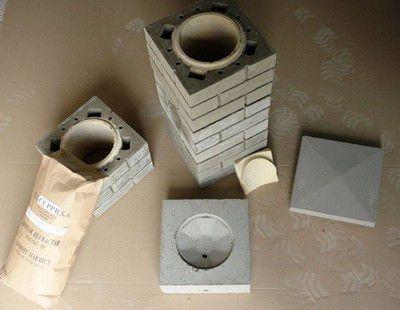

The pipe can be lined with bricks or special blocks
Another option is a metal casing, which is put on an asbestos pipe insulated with mineral wool. Thus, a sandwich is obtained that will well keep the pipe from sudden temperature changes. In order for the thermal insulation to fully play its role, it must be arranged along the entire height of the asbestos-concrete section of the chimney.


Thermal insulation of the outer section of the asbestos-cement pipe
A metal umbrella is put on top of the asbestos pipe, which will not allow moisture from the outside to penetrate inside.
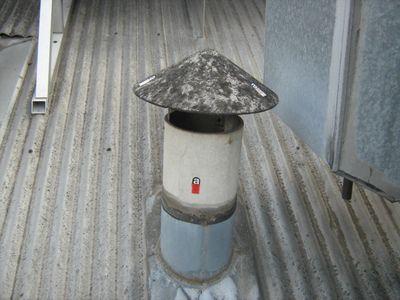

The head of the pipe will end with an umbrella against the ingress of precipitation
There is another option for thermal insulation - with the help of specialized cinder-concrete blocks, which are fixed around the asbestos-cement pipe in the form of a box. The distance between these prefabricated elements and the pipe can be up to 10 centimeters or more, depending on the climatic conditions of the region where the chimney is installed. These formed cavities are filled with expanded clay, mineral wool or slag.
Why have they been popular in the past?
In Soviet times, there was an acute shortage of all types of building materials. Asbestos pipes were a real boon for private developers. The runs met all safety standards, did not have a worthy alternative, were distinguished by their strength, tightness and an affordable price. The links were used in the furnace business, the arrangement of water pipes, sewers and the construction of wells.
Over time, the requirements of GOST were replaced by TU. Changes were made to the production technology that negatively affected the quality characteristics of the products.
Modern products are no longer intended for the removal of combustion products with a temperature above + 300 ºС.
They can only be used for a gas boiler, installed in the middle and at the end of the chimneys of saunas and baths. But, it is better to abandon this idea and use pipes made according to TU for arranging low-pressure communications and protective structures for laying cables.
Asbestos chimney size
When choosing pipes for a chimney made of asbestos, you need to be guided by the following considerations:
- The use of this material is possible only for gas boilers and pyrolysis heating units, which are characterized by a low temperature of flue gases.It should be borne in mind that the smoke of pyrolysis furnaces is oversaturated with products that contribute to the formation of condensate, and therefore soot.
- The diameter of the asbestos chimney pipe should not be less than the outlet of the heating unit.
- The total length of the chimney must be at least 5 meters, while the excess over the roof ridge must be at least 0.5 meters.
- A significant excess of this indicator will also lead to undesirable consequences due to a decrease in the speed of movement of gases in the pipe. This will increase the amount of condensate formed.

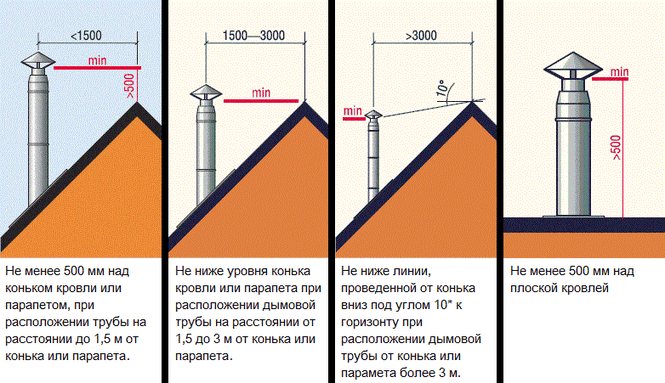
The efficiency of a chimney made of any material depends on its correct installation on the roof of the house.
Which type is suitable for which chimneys
The recommendations of specialists on the use of pipes made of asbestos cement in heating systems are short. Purlins made according to modern technical conditions should not be installed indoors and directly on brick ovens. At any time, pipes can crack and dangerous carbon monoxide fills the room.
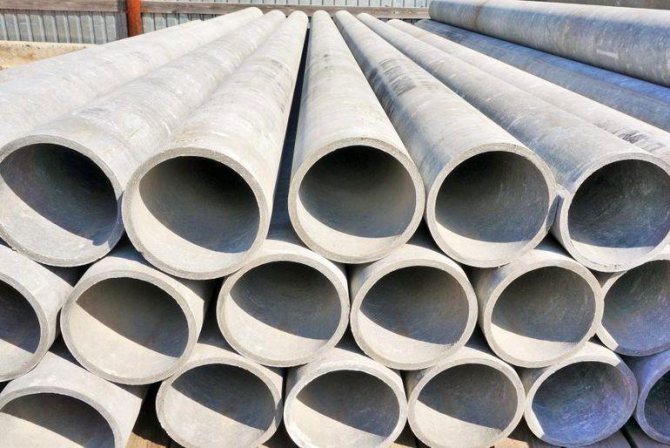

As for the use of products of different types, they can be installed in the following places:
- Free-flow. They have thin walls and low resistance to stress and impact. They are best installed inside utility rooms and attics. That is, in those places where people are not constantly present and there is no likelihood of mechanical damage to the highway.
- Pressure. The products are more durable and pressure resistant. It is advisable to install the girders on the roof, where there is a wind load. Pressure pipes are allowed to be used for fireplaces and stoves, provided that they are heated with wood.
In all cases, it is necessary to pay attention to the device for smoke removal from asbestos pipes, since they tend to clog with soot in a short time.
How to install a heater with your own hands
Installing insulation is not a complicated procedure, it is easy to do it yourself. Before starting work, you need to understand what method of insulation will be used. It depends on the type of chimney, the structure of the building and the funds that are planned to be spent on thermal insulation of the chimney.
A reliable way of insulation is bulk. A special box is mounted around the chimney. Kaolin, expanded clay, sand, slag and other heat-insulating materials are poured into it. The method is highly reliable: the structures are strong and durable. The heaters used are non-flammable, resistant to high temperatures. The properties do not deteriorate over time, which makes it possible to reliably isolate the chimney. The main disadvantage of this method is its high labor intensity. The box is recommended to be installed at the stage of building construction. Otherwise, serious alterations may be required, which will entail high costs.
Insulation, type "sandwich"
The most popular method of chimney insulation is "sandwich". Roll or sheet products made of basalt, glass or other mineral wool are used. The "sandwich" is formed as follows: the bottom layer is the chimney itself, the outer layer is an additional sheet of iron, the "filling" is a layer of insulation. The gap should be selected on the order of 4-5 cm. That is, the diameter of the outer pipe should be 8-10 cm larger than the diameter of the inner one.
We cover the chimney step by step with our own hands
In order for the work to be done efficiently, and the chimney to function properly, it is necessary to use products without chips and cracks. Their diameter should be larger than that of the furnace outlet.
How to fix
The chimney is installed from the bottom up. First of all, the section is attached to the branch pipe of the boiler or furnace. Since there are no fittings, suitable sized cast iron adapters are used. The tightness of the connection is achieved by using an asbestos cord dipped in refractory clay.
The first section is rigidly fixed. For this, clamps are used, screwed to the wall.
How to build up
How to connect asbestos pipes during the construction of a chimney? It is enough to purchase special couplings, which are usually sold as a set.
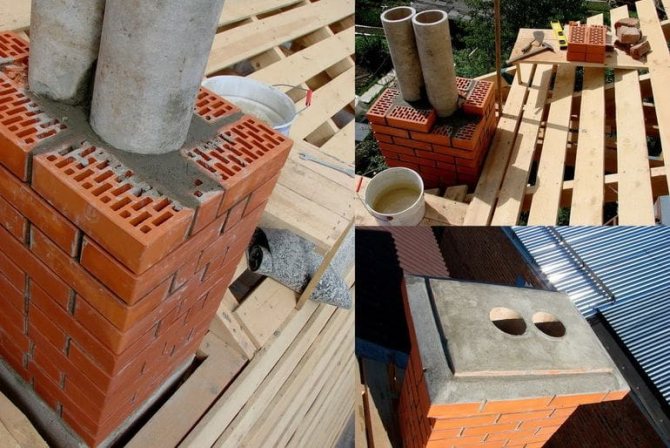

It is necessary to take asbestos couplings without rubber gaskets. The joints are filled with a refractory cord. It is possible to build up a pipe leading to the roof in a similar way. To do this, it is cut off with a grinder under the roof, after which a coupling and a new run of greater length are placed.
How and what to insulate
Chimney insulation is carried out to increase draft and prevent condensation. This event is the final stage of construction. The quickest and easiest way is to wrap the pipes with mineral wool, twist it with wire and cover it with foil on top. A more complex, but high-quality method is considered to be the use of a galvanized steel casing.
After placing the casing on the pipe, the gaps are filled with insulation material.
How to embed a tee
This event takes place when an additional boiler, stove or fireplace is installed in the house. The simplest solution is to remove the pipe section from the line. A tee is installed on the cut of the lower edge, to which the chimneys are connected. The removed section is shortened and inserted into the chimney.
The joint is insulated with a heat-resistant cord and secured with a sleeve.
Can I use an asbestos pipe?
The idea of whether it is possible to fix such products in the chimney is initially a failure. Yes, it is faster and cheaper than a major overhaul. But, it is worth remembering the difficulties with maintenance, the operation of asbestos-cement pipes and the possible consequences.
Types of chimney insulation
It is necessary to isolate the chimney from two negative destructive factors: from overheating of structures and from leaks at the joints. Therefore, in the article we will consider two types of chimney insulation:
- Fireproof thermal insulation;
- Waterproofing.
It is recommended to immediately carry out complex insulation, solving not only the main problems, but also improving the operating conditions of the furnace. For example, insulating a pipe running through an unheated attic reduces the risk of overheating of wooden roof elements and reduces the risk of condensation, which can lead to excessive soot deposits, corrosion or pipe breakdown. Waterproofing the pipe will help to avoid rotting of the truss system and ceilings, as well as the destruction of the pipe if it gets wet.
Methods for fire insulation of chimneys
The easiest and most reliable, but not always the cheapest way is to install a "sandwich" chimney made of ceramic or metal. In such chimneys, the inner pipe, which performs the function of removing smoke, is made of heat-resistant steel or ceramics and is thermally insulated with non-combustible insulation materials: mineral, stone or basalt wool. The outer layer of the sandwich chimney is made of steel or ready-made claydite-concrete blocks.
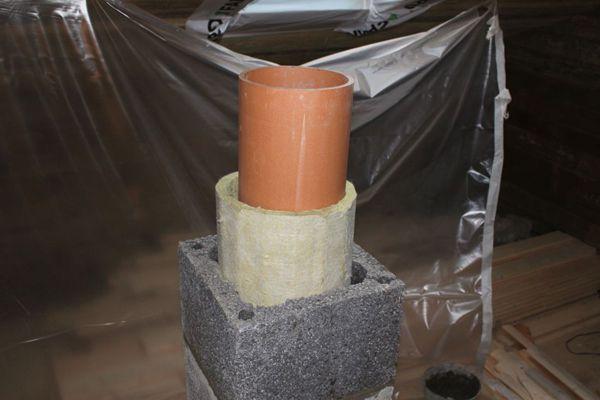

Prefabricated Ceramic Chimney - Safe Solution
Prefabricated chimneys are completed with elements for fastening, revision, maintenance, as well as for connecting several heating devices. Installation of such a chimney is not difficult, but it requires compliance with the instructions, only then it will be completely safe.


Thermal insulation of a "sandwich" pipe
Video - sandwich diaphragm for the passage of the pipe through the ceilings
Another insulation method used in the construction of a stove is a brick chimney. Due to the low thermal conductivity of the brick, its walls do not heat up to dangerously high temperatures, therefore, no additional measures to insulate such a chimney are required, except for the correct execution of fire-prevention cutting of floors and roofs. To save and facilitate the construction, a brick chimney is sometimes finished with a pipe made of metal or ceramics. In this case, they are thermally insulated according to the technology described below.
Thermal insulation of metal and ceramic single pipes is possible using boxes made of non-combustible materials and mineral non-combustible thermal insulation - stone or basalt wool. It is possible to operate such chimneys without thermal insulation, but the implementation of fire-prevention cutting in accordance with all the rules is mandatory in any case.
Chimney waterproofing methods
Chimney waterproofing is installed in the place of its exit to the roof. The larger the pipe and the farther from the ridge it is located, the more difficult operating conditions await it: with rain, more abundant water flows, in winter - increased snow load. With insufficient waterproofing, rain and melt water penetrates into the interior of the house, leading to leaks, decay of wood and destruction of concrete and brick structures, including the chimney itself.
The method of waterproofing depends largely on the shape of the pipe and the type of roofing. For round pipes, metal or polymer cuts are used, for rectangular pipes - metal aprons and abutment strips. How to waterproof a pipe is described in detail in the article "Roof cutting of a chimney", and then we will talk about the technology of thermal insulation of a chimney.
Fire safety measures and risks
Asb chimneys can serve for decades if you follow the rules of their operation and maintenance.
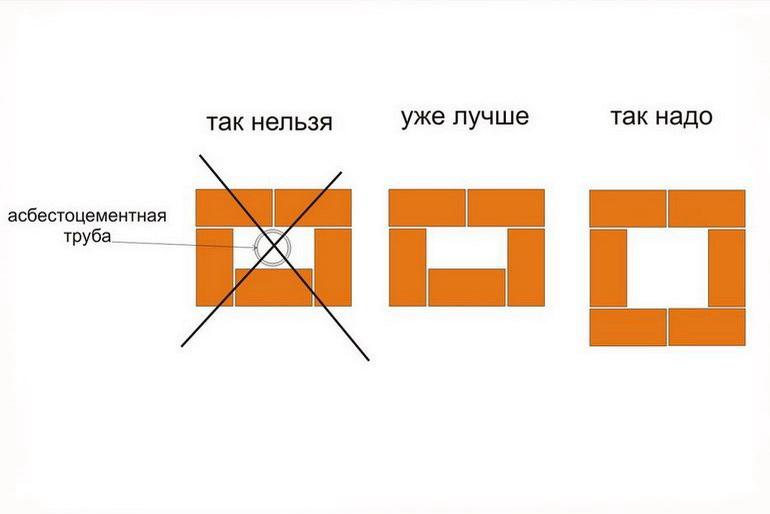

Fire safety measures are as follows:
- use of fuel with low heat transfer;
- installation of sections in places where the exhaust temperature drops to the optimal value;
- regular cleaning of the channels for the withdrawal of combustion products;
- use of high-quality thermal insulation.
However, the risk of cracking due to chemical corrosion is always present. The chimney must be checked regularly for leaks.
Asbestos Fabric Grades
The main brands of asbestos fabric:
AT1-AT5 - have a thickness of 1.6 to 2.2 mm, a mass fraction of asbestos of at least 80% and a density of up to 1350 g / m2. They are used in the manufacture of asbestos laminates, as well as other industrial products and equipment. Well suited for thermal insulation of surfaces in the temperature range from 120 to 380 ° C;
AT6 - has an increased thickness of 3.6 mm and contains at least 95% asbestos. This achieves a density of 3200 g / m2. Used as a diaphragm for water electrolysis. Withstands temperature conditions - no more than 100 ° С;
AT7 - AT9 - thickness is from 2 to 3.3 mm, and the asbestos content is not less than 90%. Weight: up to 1150-2100 g / m2. Gaskets and other heat-insulating materials are made from this brand, which can be used on surfaces with temperatures up to 450 degrees;
AT10 with brass wire - used for the manufacture of products in industry;
AT13 - has the greatest thickness. The area of application, as in the AT1-AT5 grades, is as a cushioning and heat-shielding material. But unlike them, it is able to withstand temperatures up to 400 ° C;
AT16 - analogue of the AT6 brand, but with a higher web thickness.



